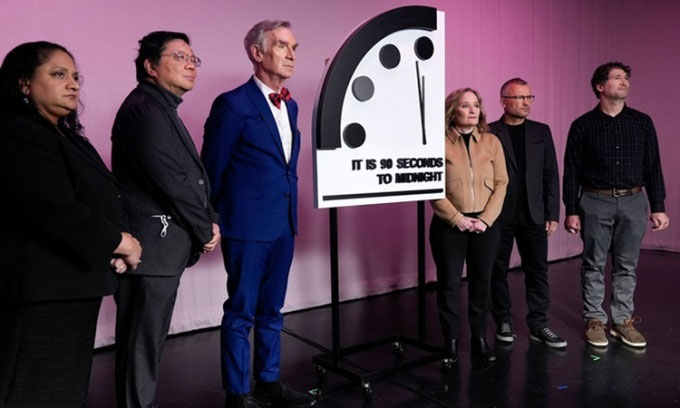In a surprising turn of events, the iconic Doomsday Clock, a symbolic representation of the world’s perceived proximity to global catastrophe, has remained unchanged in 2024. The Bulletin of the Atomic Scientists, responsible for setting the clock, has opted not to move the hands, signifying that the global situation has not significantly worsened since the last update. This decision prompts a closer examination of current global security conditions and the factors contributing to the static position of the Doomsday Clock.
Backdrop of the Doomsday Clock:
The Doomsday Clock was first introduced in 1947 and has since been a visual representation of the existential threats facing humanity. The clock’s hands, positioned closer to midnight, signify an increased risk of global catastrophe. Conversely, when set further away, it suggests a more stable and secure global environment.
Factors Influencing the Decision:
-
Nuclear Diplomacy: The state of international relations plays a pivotal role in the setting of the Doomsday Clock. Recent advancements in nuclear diplomacy, arms control agreements, and diplomatic efforts to ease tensions between major powers have contributed to the decision to keep the clock steady. Progress in negotiations between nuclear-armed nations has been a key factor in maintaining the status quo.
-
Climate Change Mitigation: Addressing climate change and environmental issues is another critical aspect considered by the Bulletin of the Atomic Scientists. Advances in renewable energy technologies, international cooperation on climate goals, and commitments to reduce carbon emissions have likely influenced the decision not to move the clock closer to midnight.
-
Global Health Crisis: The ongoing global health crisis has undoubtedly shaped the world’s security landscape. The Bulletin of the Atomic Scientists may have taken into account the collaborative efforts in response to the crisis, highlighting the importance of international cooperation in addressing global threats.
-
Technological Risks: The rapid advancements in technology, particularly in the fields of artificial intelligence and cyber warfare, pose potential threats to global security. However, ongoing discussions and efforts to establish ethical guidelines and international norms in these areas may have contributed to the decision to maintain the clock’s position.
Future Prospects:
While the Doomsday Clock remains steady in 2024, it is essential to recognize that the global security landscape is dynamic. The decisions and events of the coming years will undoubtedly influence the clock’s future movements. Continued international cooperation, diplomatic efforts, and a commitment to addressing pressing issues such as climate change will be crucial in ensuring a more secure and stable world.
Conclusion:
The decision to keep the Doomsday Clock unchanged in 2024 reflects a cautiously optimistic outlook on the state of global security. While acknowledging progress in various areas, it emphasizes the need for continued vigilance and proactive measures to address emerging threats. As the world navigates complex challenges, the Doomsday Clock serves as a constant reminder of the collective responsibility to safeguard humanity’s future.
